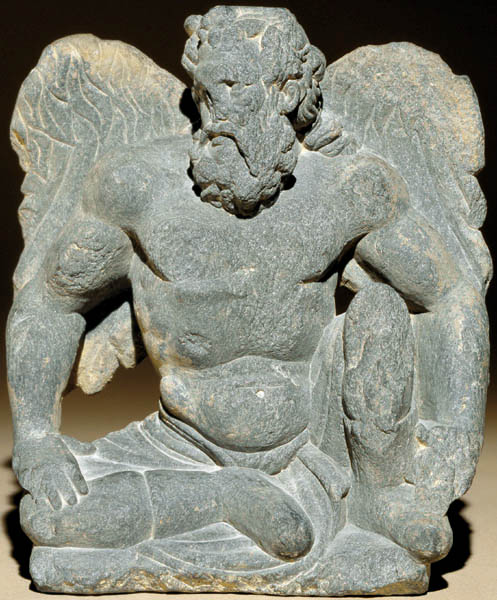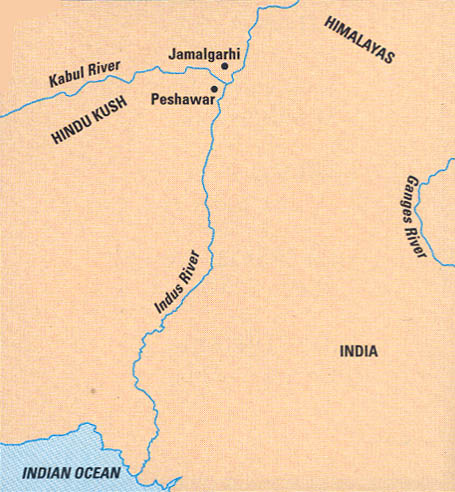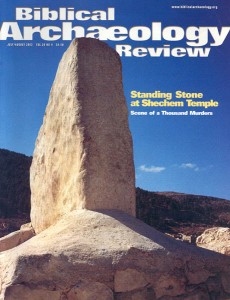
Found in northern Pakistan, this 9-inch-high relief portraying the Greek Titan Atlas is a potent reminder of how far east Hellenistic culture extended as late as the third century A.D.
Carved from gray schist (fissile rock), this winged seated figure can be identified as Atlas by virtue of his muscular torso, long hair and beard. In Greek mythology, Atlas bears the world on his massive shoulders after he and the other Titans—the first generation of gods—are vanquished by the Olympian gods (Jove and his kin). This relief comes from an architectural context; fittingly, it may have originally been placed on a roof-beam, where it “supported” the roof.

Jamalgarhi, the findspot, is located in what was the ancient realm of Gandhara, encompassing parts of modern Pakistan and Afghanistan between the Indus and Kabul rivers. Alexander the Great conquered the region in 327 B.C., beginning its gradual Hellenization. This relief was carved in the second or third century A.D., when Gandhara was under the control of the mighty Kusana dynasty, which was instrumental in promoting the Buddhist faith.
Already a library member? Log in here.
Institution user? Log in with your IP address.

